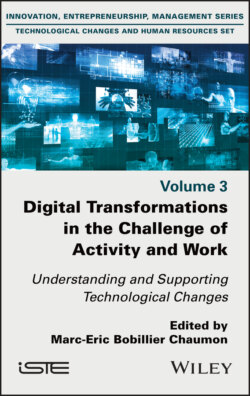Читать книгу Digital Transformations in the Challenge of Activity and Work - Группа авторов - Страница 17
1.3.2. Invisibility vs visibility of the activity
ОглавлениеIn an activity that tends to become dematerialized, less tangible and less comprehensible, more distributed between human–machine systems, the individual finds it increasingly difficult to assess what his or her actual contribution to work is. He/she thus intervenes at a given moment or on a particular sequence of the work process, without being able to judge what he/she really brings, his/her added value in the task, or the various impacts of his/her professional conduct: in terms of customer satisfaction, improvement of the work process or efficiency of the actions undertaken.
This lack of visibility on the activity gives the feeling of a “truncated” action, that is, the professional has difficulty not only in evaluating who he/she serves (is it a customer, a robot, an automated procedure?), but also what he/she is doing the work for and especially what his/her work is used for. This sense of usefulness is one of the fundamental attributes of professional recognition (Dejours 1993). It is based on self-actualization in the social field of valorization: of oneself by oneself, and of oneself by others: that is, by the way I recognize myself in what I do and also in the way others perceive me in conjunction with what I do. Professional identity also asserts itself as the framework of psychological health. Not being able to identify with what we do and to be recognized (by our peers, those in charge) in what we do, weakens our identity (the way we consider, appreciate and value ourselves) and consequently affects our well-being.
Conversely, these same systems can contribute to increasing the visibility of work through systems and indicators (reporting, indicators, Big Data, connected objects) that make it possible to (re)trace and evaluate in almost real time all the work that the individual does, and above all the work that he or she does not do, in relation to the standards performed. With the connected factory, for example, we will have powerful means that recount who does what, when and within what timeframe. This panoptic world (Bain and Taylor 2000), constantly supervised by these technologies, also makes the individual more transparent and measurable and therefore more predictable and controllable as well. In other words, one has the impression that these ICTs give one more control and more capacity for action over one’s human behavior (through better self-knowledge). But we are also creating the conditions for voluntary servitude with regard to these devices: which tell us how to act, at what pace to live, and what the right attitude to have is.
